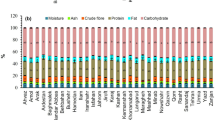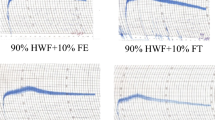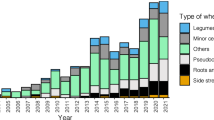Abstract
THE association of maize-eating with pellagra and the prevalence of this disease in Egypt have, from time to time, suggested the replacement of maize by some other flour in bread-making; this being impracticable, attempts have been made to raise the nutritive value of maize by supplementing it with other flours. In Egypt, the problem has been unintentionally solved by peasants who have adopted the addition of either fenugreek (Trigonella Fœnum græcum L.), or okra (Hibiscus esculentus L.) to maize flour. The resulting bread was very satisfactory, at least so far as added fenugreek is concerned, and it compared well with wheaten bread.
This is a preview of subscription content, access via your institution
Access options
Subscribe to this journal
Receive 51 print issues and online access
$199.00 per year
only $3.90 per issue
Buy this article
- Purchase on SpringerLink
- Instant access to full article PDF
Prices may be subject to local taxes which are calculated during checkout
Similar content being viewed by others
Author information
Authors and Affiliations
Rights and permissions
About this article
Cite this article
EL-KATIB, M. Value of Adding Cotton-Seed, Okra and Fenugreek to Maize Flour. Nature 159, 716 (1947). https://doi.org/10.1038/159716a0
Issue date:
DOI: https://doi.org/10.1038/159716a0
This article is cited by
-
Serum cholesterol, triglycerides and total lipid fatty acids of rats in response to okra(hibiscus escuientus) seed oil
Journal of the American Oil Chemists' Society (1991)
-
Chemical composition and biological evaluation of Okra (Hibiscus esculentus) seeds and their kernels
Qualitas Plantarum Plant Foods for Human Nutrition (1985)



